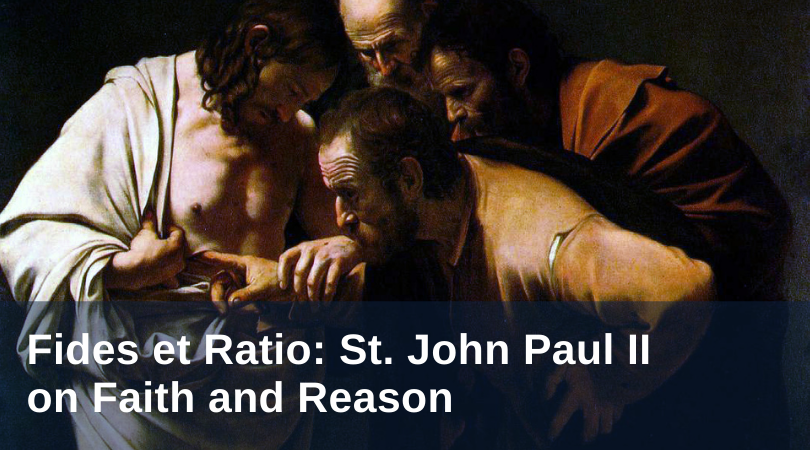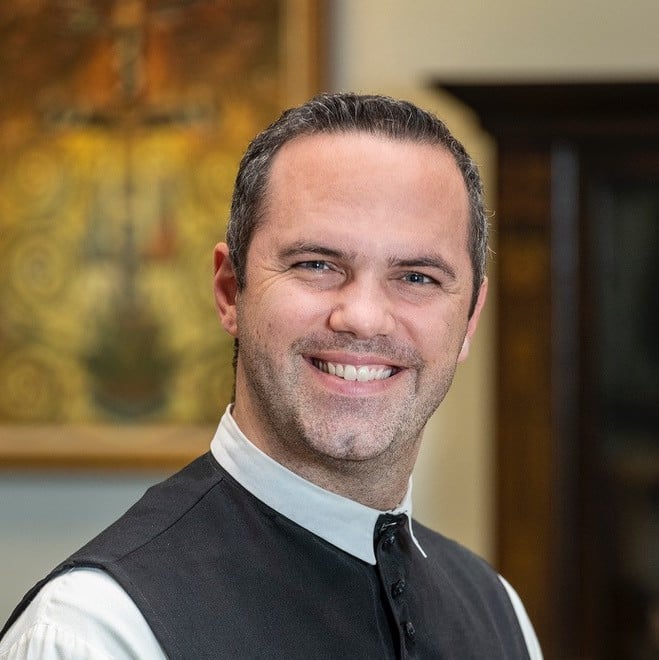
The story of “doubting” Thomas (cf. John 20:19–31) is a gospel passage that can make people cringe. This passage is, sadly, often interpreted as though it were contrasting reason, on the one hand, with faith (or gullibility), on the other. For example, one very influential atheist, Richard Dawkins, refers to the story of doubting Thomas in The Selfish Gene to argue Christians think the “greatest virtue” of faith is that it is “blind” and “doesn’t need evidence” at all (330).
But if we’re more thoughtful when we read the passage, we will see that an interpretation which divides reason and faith distorts it dramatically. Notice, for example, that Thomas must still believe what he sees. He says, “Unless I see the mark of the nails in his hands and put my finger into the nail marks and put my hand into his side, I will not believe.” And Jesus, mercifully accepting Thomas’ stubborn refusal to accept the testimony of his friends, invites him to “see” and “believe” at the same time. Thomas’ evidence-based inquiry does not eliminate the role of faith in his life. On the contrary, there is a role for faith precisely in his passionate and rational search for truth. What seems to be the issue is not the desire for evidence, but rather the role of community and faith. The problem wasn’t that Thomas wanted to see the risen Lord. After all, who doesn’t want to see him? It was that he wanted to make his own sight a condition for belief. He refused to believe the credible testimony of his friends. He refused to reason within a faithful community.
This passage reminds me of Fides et Ratio—that marvelous encyclical published by St. John Paul II on faith and reason. There the Pope identifies the rational search for the truth as an element of human nature. The human being, he says, is essentially “the one who seeks the truth” in all his thoughts and actions (§28).
But there is another aspect of human existence. The Pope observes that we are all born into a family and a culture. There is so much that we accept as true that we have not verified for ourselves. As we mature, we can certainly subject some of these truths to critical examination. “Nonetheless,” he observes, “there are in the life of a human being many more truths which are simply believed than truths which are acquired by way of personal verification. Who, for instance, could assess critically the countless scientific findings upon which modern life is based? Who could personally examine the flow of information which comes day after day from all parts of the world and which is generally accepted as true? Who in the end could forge anew the paths of experience and thought which have yielded the treasures of human wisdom and religion? This means that the human being—the one who seeks the truth—is also the one who lives by belief” (§31).
Our search for truth unfolds within a life of faith, and therefore the rational person will look for someone to trust. We could never reason if we could not also believe. In this sense, we should criticize Thomas for refusing to accept the testimony of trustworthy witnesses. After all, who does he think he is, refusing to accept anything but what he can verify himself? We all need to trust someone.
This is why the credibility of our teachers, scientists and intellectuals is so important, and why it is so dangerous when these professions allow their authority to be compromised by their submission to ideology. This is also one reason why the scandal of abuse in the Church is so tragic: the crimes of abusers and their enablers threaten the credibility of the Church’s preaching about the marvelous redemption that can overcome every evil – and thus they tempt us to doubt and to despair.
So, we need to trust. But whom? The failure of some authorities makes the credibility of others stand out even more. There are true “martyrs” – the word means “witness” – who stand for the truth they preach even at the cost of suffering. Their coherence gives them credibility. When we go searching for someone to trust, let us search for those whose integrity renders them worthy. In this sense, we should, perhaps surprisingly, be like Thomas. Thomas was wrong not to trust his credible friends. But he was right, I think, to focus on the wounds of Jesus when believing in him. We must see the wounds of those we want to trust. Someone who bleeds for the truth he proclaims should be taken seriously.
It’s not a question about if we believe; it’s about whom we believe. Thomas’ failure was not that he sought evidence; it was that he wanted to find evidence without trust in anyone other than himself. If we refuse to believe anything without seeing for ourselves, we will be fraught with uncertainty and inconsistency. If we can believe credible witnesses without seeing for ourselves, we will be blessed.
Featured image: The Incredulity of St. Thomas (ca. 1600) by Caravaggio (1571–1610); PD-OLD.
Like what you read? Submit your email below to have our newest blogs delivered directly to your inbox each week.
Editorial Note: This post originally appeared at The Texas Catholic on May 14, 2019.
It is reprinted here with permission of the author and the publisher.


